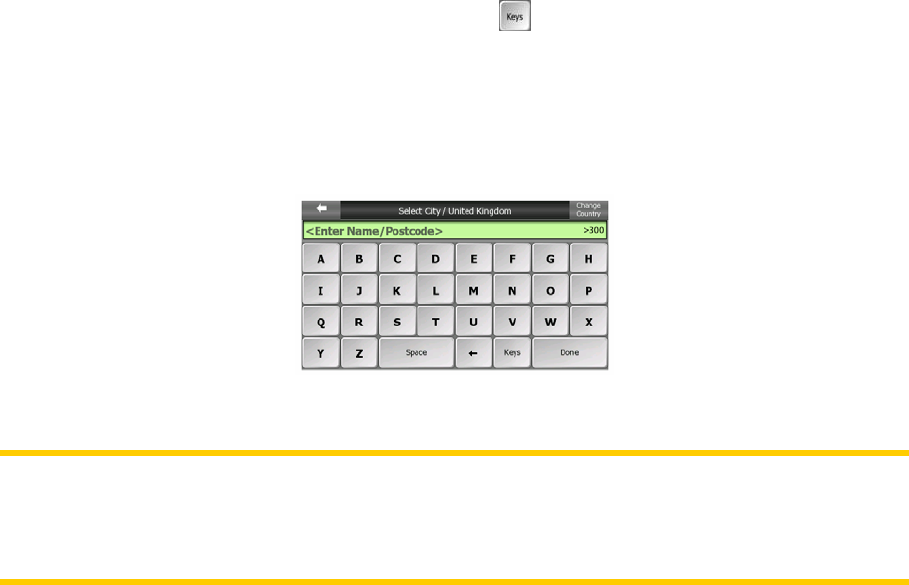
N.I.C.E 430 will remember your last choice and offer it the next time you need to
enter data.
The alphabetic keyboards in N.I.C.E 430 do not contain special characters, because
you do not need to enter accents when searching for a destination. Type only the
base letters (the letter most similar to the accented one) and N.I.C.E 430 will search
for all their combinations in the database (e.g. for the French street ‘Cité Bergère ’
you only need to type ‘Cite Bergere’, and the rest is done by the program).
When you type in POI or track log names, N.I.C.E 430 will automatically turn all
initials into capitals to create names that look pleasant.
3.2.7.1 ABC-type keyboards
These keyboards contain only letters (Latin, Hebraic, Greek or Cyrillic). If you wish to
enter numbers, you need to tap the Keys ( ) button to switch to the numeric
keyboard.
Use Backspace (arrow pointing left between Space and Keys) to delete the last letter
you have entered if you have made a mistake, tap Space to enter more words, and
hit Done to finish entering the text.
This type of keyboard has large, finger-friendly buttons.
Note: If you have chosen a program language that uses Latin letters, only the ABC
keyboard appears. If you choose the Greek language, an additional keyboard
appears with Greek letters. Similarly Hebraic and Cyrillic letters are available when
Hebrew or Russian is chosen in Setup / Languages (Page 71).
If you are used to computer keyboards, you may consider trying one of the
QWERTY-type keypads.
3.2.7.2 QWERTY-type keyboards
QWERTY-type keyboards have both letters and numbers on them. Their layout is
the same as of the standard QWERTY, QWERTZ (German) and AZERTY (French)
keyboards. To switch to your desired QWERTY-type keyboard, press the Keys
button repeatedly until the appropriate keyboard appears.
14


















